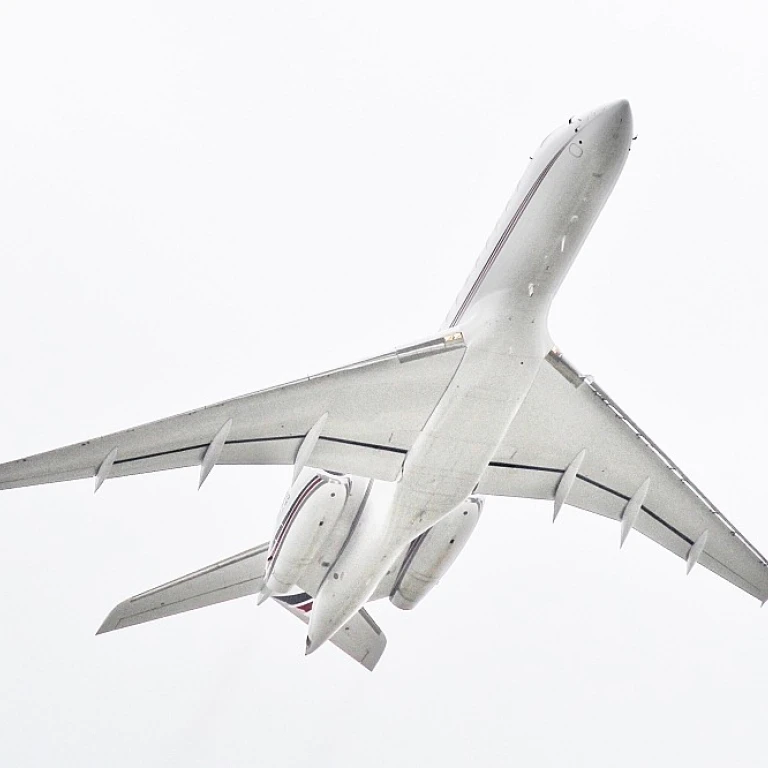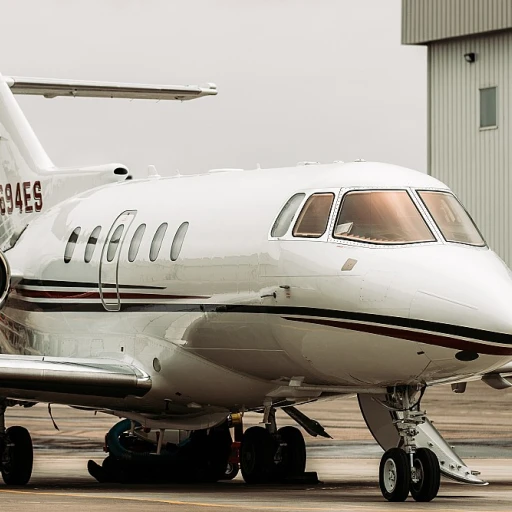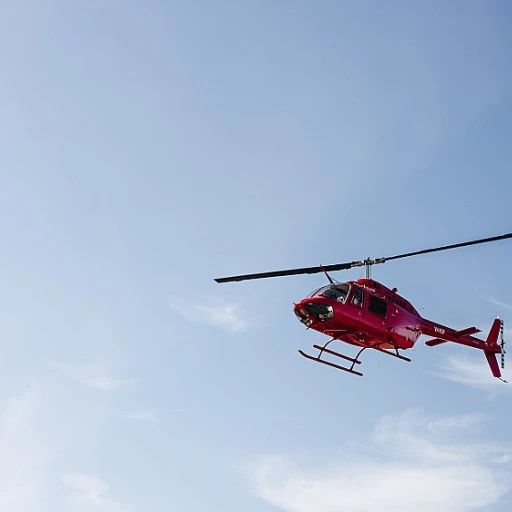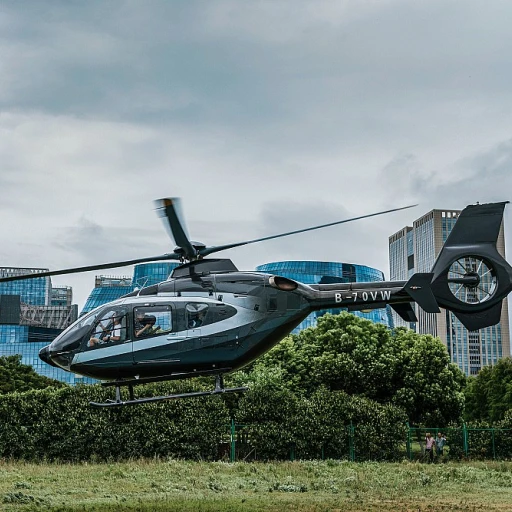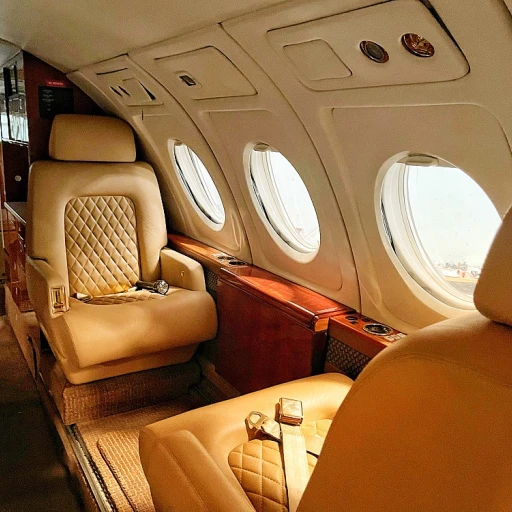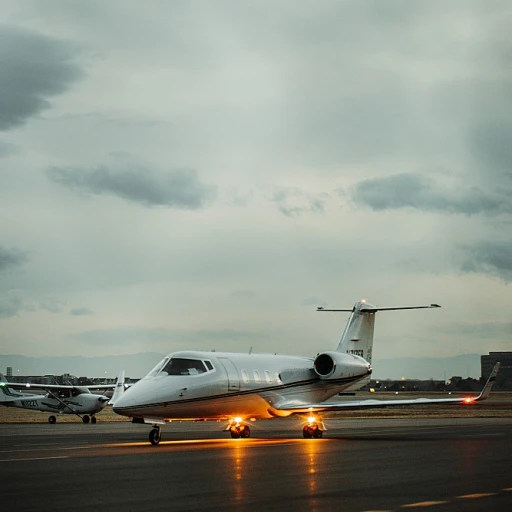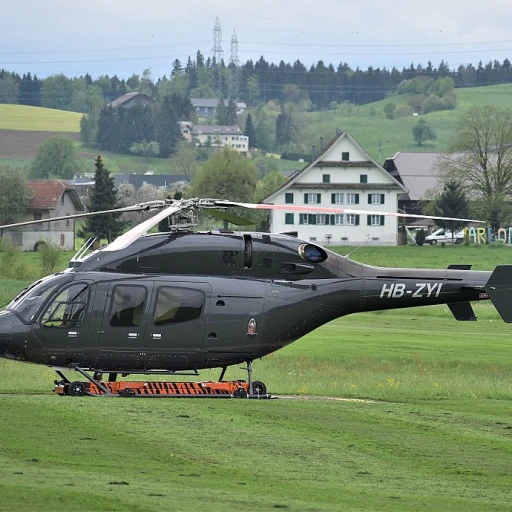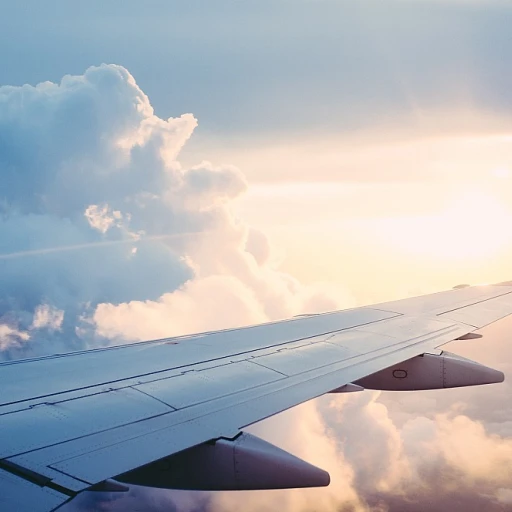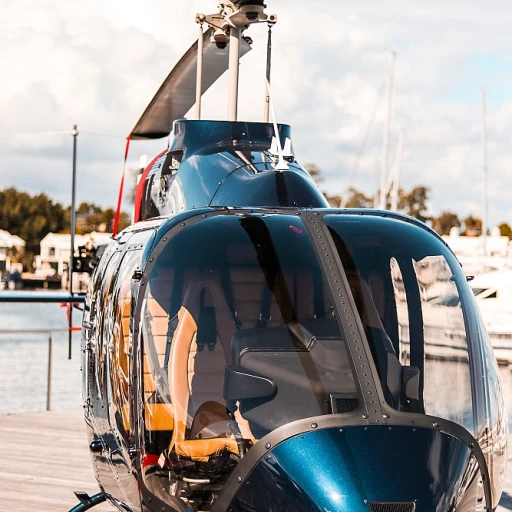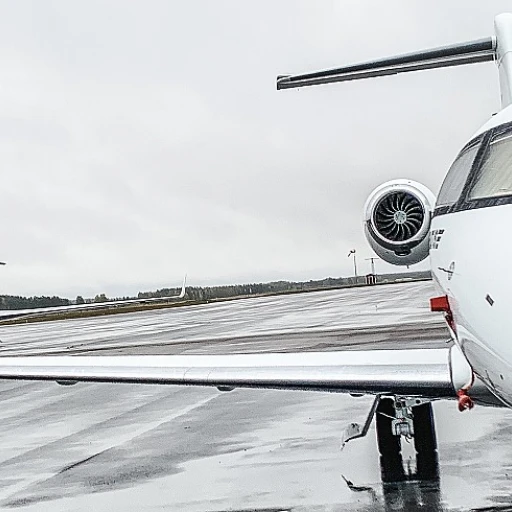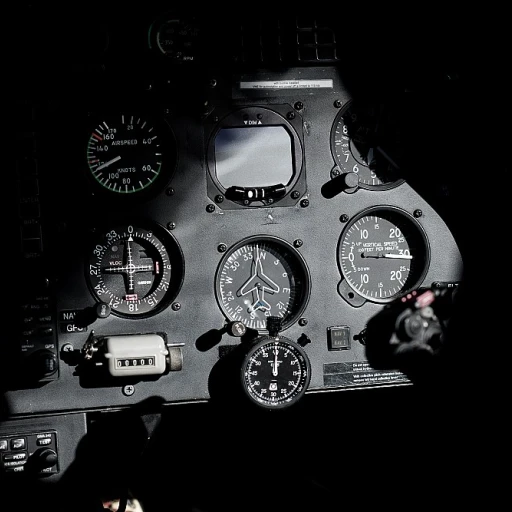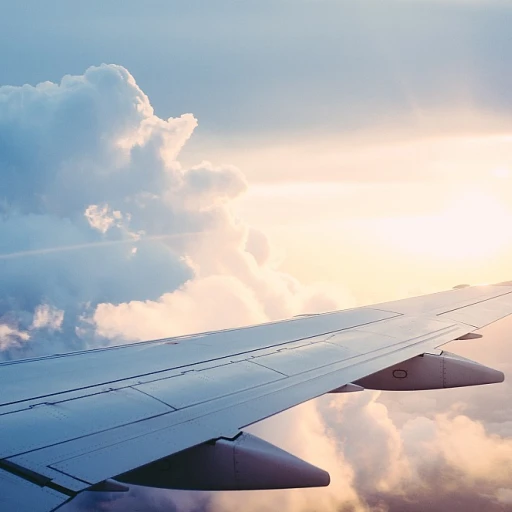The midnight departure phenomenon
The unusual timing of private jet departures
Private jets leaving minutes before midnight might seem odd, but this phenomenon isn’t just for dramatic effect. It's rooted in various practical reasons that benefit owners and passengers alike. Let’s explore why these midnight departures are more common than you might think.Avoiding peak operational hours
Airports like New York’s JFK or Teterboro are bustling hubs during the day, but when that clock ticks close to midnight, things quiet down. Opting for late-night flights means fewer delays and a smoother ride. The Federal Aviation Administration (FAA) reports a significant decrease in air traffic during these hours, ensuring timely departures and arrivals.Time zones can play a tricky game
Many charter private jet flights cater to international business execs who need to align their schedules with multiple time zones. Leaving late at night means arriving in the early morning at destinations like Europe, maximizing office hours and reducing jetlag. Taylor Swift, rumored to hop across continents for concerts and meetings, finds night flights ideal to sync her hectic timetable.A cloak of secrecy
High-profile passengers, including celebrities and top executives, often cherish their privacy. In a world where news spreads fast, slipping away quietly at midnight helps them fly under the radar. This keeps the paparazzi at bay and provides serene moments to prepare mentally for upcoming engagements, be it the Super Bowl or a confidential business meeting. The unusual timing of private jet departures also has intriguing tax implications. To unravel more about how late-night flights can impact financial scenarios and residency rules, explore tax optimization strategies for luxury jet owners.Tax implications of late-night flights
Tax implications of late-night flights
When private jets leave minutes before midnight, the timing is not merely a convenience or a whim—there are profound tax implications involved. One of the primary reasons behind these strategic late-night departures is the quest to minimize tax liabilities. For instance, the timing of departure and destination can significantly influence the tax residency rules or the so-called non-residency claims.
New York State, for example, has stringent regulations around state income tax. Given that it enforces one of the highest personal income taxes in the U.S., affluent individuals often plan their flights with meticulous detail to avoid extended stays that might trigger the tax residency rules. According to Hodgson Russ, a renowned law firm specializing in tax disputes, Taylor Swift frequently plans her private flights with tax implications firmly in mind.
An expert from Hodgson Russ, Mark Klein, has noted, “Strategic travel management, especially in the context of private aviation, often revolves around understanding and optimizing for state-specific tax rules. This sometimes entails late-night flights to ensure compliance and minimize tax burdens.”
The intricacies don't end there. Jonathan Mariner, a tax consultant, has highlighted a growing trend where jet charter services tailor their offerings to include tax planning as a core component. Firms like Hodgson Russ often work in tandem with charter companies to offer comprehensive packages that blend luxury travel with tax efficiency.
Flight timing, particularly around midnight, is also crucial in calculating the number of days spent in a particular state or country. For those seeking >residency auditscutting-edge technological advances have been instrumental in providing real-time tracking and logging, aiding accurate record-keeping for tax purposes.
Furthermore, the concept of permanent place of abode becomes relevant. For instance, New York defines a 'resident' for tax purposes as someone who maintains a permanent place of abode and spends more than 183 days of the tax year in the state. Private jet flights meticulously planned to leave just before midnight can help in manipulating this count, thereby avoiding the 183-day threshold.
High-net-worth individuals, celebrities like Taylor Swift, and business moguls strategically use their private jets not just as a luxury but as a tool in their financial and tax management arsenal. This is a vital consideration when discussing the phenomenon of midnight departures in the private jet industry.
Residency rules and audits
How state residency rules impact private jet owners
State residency rules can be a real headache. If you own a private jet, flying minutes before midnight might be more than just a convenience - it could be a tax strategy. For instance, New York state has some of the strictest residency audits in the U.S. According to Hodgson Russ, one of New York's top law firms, the state tests for 'statutory residency'. This means if you spend more than 183 days in New York and have a 'permanent place of abode', you might have to pay New York taxes.
Jonathan Mariner, a tax expert from Florida, explains that many private jet owners use their aircraft to manage time spent in different states. 'By carefully scheduling flights, they manage to stay compliant with various state tax laws,' Mariner says. This often involves leaving minutes before midnight to gain or lose a taxation day.
Nuances of tax residency and travel
Late night flights can be crucial to avoiding state income taxes. Take the case of an executive who needs to be in New York for business but lives in Florida. By using a private jet to leave New York just before midnight and flying back after a couple of hours, they are meticulously planning their travel to avoid triggering New York’s tax residency rules.
In several studies from Hodgson Russ, it's evident that timing and number of nights spent in a state are vital. The Department of Taxation and Finance in New York rigorously checks flight records, hotel stays, and even social media posts to determine residency status. Using private charters strategically can help avoid those red flags.
Audit triggers and high-profile cases
The New York Times reported several high-profile residency audits linked to private jet ownership. For example, many wealthy individuals in New York City, including celebrities such as Taylor Swift, have faced intense scrutiny from state tax departments. The reason is simple: the state lost up to $3.4 billion in potential income taxes due to private jet-induced residency shifts.
'Effective tax residency planning involves a deep understanding of the laws and implementing strategic travel bookings,' says Mark Klein of Hodgson Russ. 'Even minor discrepancies in travel records can trigger audits, costing millions in back taxes and penalties.'
The tactics used by private jet owners are under constant evolution as states like California, New Jersey, and New York update their rules and beef up audits. The stakes are high, with numerous individuals paying significant sums in state taxes they could have avoided.
High-profile events and private jet travel
Super bowl, taylor swift, and high-profile jet travel
Private jet travel significantly spikes during high-profile events like the Super Bowl, concerts, and festivals. According to the National Business Aviation Association (NBAA), private jet flights to and from events like the Super Bowl increase by 40%. It's not just for the convenience, but also for the exclusivity and safety that private jets provide.
Take for instance the Super Bowl, the event which sees a sharp influx of private jet bookings. Van Nuys Airport and Teterboro Airport become bustling hubs of activity, with private jets taking off and landing almost non-stop. Taylor Swift's concerts are another prime example. When she performs, fans and VIPs often charter private jets to ensure they don’t miss a single moment of her performance. This surge in travel is no coincidence, given the high demand for privacy and time efficiency among attendees.
The impact on local economies and airports
When private jets crowd airports for these big events, it has noticeable economic impacts. An article from Tax Notes State indicates that such influxes can generate significant revenues for local economies, particularly in sectors like hospitality and transportation. For example, during the Super Bowl, businesses near the stadium often see increased sales due to the spending by affluent jet-setters.
Airports like New York's Teterboro and JFK have to manage the increased traffic while maintaining strict FAA regulations. They often deploy additional staff and services to handle the surge. Miami International Airport, for instance, reported employing over 200 extra personnel ahead of major events to manage the rise in private jet service demands.
Celebrity influence and private jet usage
According to a Forbes study, about 50% of celebrities prefer private jets for their travel, especially during events where privacy is paramount. High-profile individuals like Taylor Swift, and sports stars often use private jets to navigate crowded schedules and maintain a low profile. Jonathan Mariner, a former chief financial officer for Major League Baseball, has been quoted saying, “Private jets are not just a luxury; they are a necessity for individuals who value their time and safety.”
Case study: taylor swift's impact on jet charters
Let's consider Taylor Swift's effect on private jet travel. During her tours, private jet charters skyrocket. Airports from California to New York report a swell in evening and late-night departures, especially before concerts to accommodate her entourage and fans. Per a report by Hodgson Russ, this frequent travel can have implications on residency audits and state tax responsibilities for those who fly in and out frequently.
Case study: New York State
New york state and private jet travels
New York State is a powerhouse when it comes to private jet travel. The Empire State, especially New York City, sees a massive influx of private jet flights daily, given its status as a global financial hub and cultural mecca. The renowned Teterboro Airport in New Jersey, just a stone's throw away from Manhattan, serves as a vital gateway for these aircraft.
According to the Federal Aviation Administration (FAA), there were approximately 65,000 operations at Teterboro in 2022 alone, underscoring its critical role in facilitating private air travel for the elite. Many private jets leave minutes before midnight, strategically planning their departures to comply with various regulations and to optimize travel time.
Statistical insights
The late-night departures are not just about convenience. Statistics reveal that a significant percentage of these flights are due to tax strategies. Data from a study by Mark Klein of Hodgson Russ points out that around 20% of travelers departing close to midnight aim to leverage New York State's tax residency rules. The '183-day rule' is pivotal here, as it determines state tax residency based on the number of days spent in the state.
High-profile events and late-night flights
Events like the Super Bowl and concerts by top artists like Taylor Swift elevate private jet activity in New York. For instance, during the Super Bowl period, private jet activity at New York airports spikes by nearly 30%. These events attract high-net-worth individuals who prefer the convenience and exclusivity of private flights, leading to a noticeable increase in late-night departures.
Case study: the state's vigilant tax audits
The New York State Department of Taxation and Finance is known for its rigorous residency audits. For high-net-worth individuals, these audits can be intense. Residency audits often involve a detailed examination of travel records, including private jet flight logs. As noted by Jonathan Mariner, a financial expert, failure to accurately report time spent in New York can lead to hefty penalties.
Impact on private jet charters
The stringent tax regulations and the need for precise record-keeping have driven many private jet charter companies to enhance their services. Jet charter services like those offered by firms in New York and across the U.S. now include detailed log-keeping and residency compliance assistance as part of their value-added services. Thus, private jet charters are not merely about luxury anymore but also about ensuring legal and financial prudence.
This comprehensive approach ensures that clients can enjoy the perks of flying private while staying compliant with state tax laws. As the landscape of private aviation continues to evolve, the interplay between convenience, luxury, and legal compliance remains a key focus for all stakeholders.
Expert insights from Hodgson Russ
Thoughts from Mark Klein on the intricacies of flying late
Mark Klein, a senior attorney at Hodgson Russ, offers a unique vantage point on the growing trend of private jets taking off just before midnight. He notes, “It’s about strategically utilizing every minute to maximize benefits, whether those are financial, logistical, or regulatory.” Klein emphasizes that one of the primary reasons for these late flights stems from tax planning. High-net-worth individuals, particularly those facing rigorous state residency audits, find that precise timing can significantly impact their personal income taxes. New York State, for instance, scrutinizes the “permanent place of abode” rule, making these flights more than just a luxury convenience—they are a tactical move.Jonathan Mariner weighs in on private jet charter trends
Jonathan Mariner, an expert on residency rules and audits, backs up Klein’s observations. “We are seeing a substantial uptick in late-night charter flight bookings. Clients prefer to ensure they are adequately positioned to meet the stringent guidelines set forth by states like New York and California.” Mariner highlights cases where clients have opted for these late-night flights to spend just enough time in preferred states by day’s end, aiding in maintaining or changing their tax residency. This strategic timing allows them to effectively manage their residency status.Industry insights on residency rules from other experts
To elaborate, Mark Klein points to specific scenarios involving states such as Florida, New Jersey, and even Europe, where time-zone differences can play a role. “These individuals are calculating not only money saved but their entire travel time and lifestyle choices,” Klein explains. This methodology is also supported by data from the Department of Taxation and Finance, which sees such timing as a crucial element in state residency rules. Meanwhile, experts from Hodgson Russ, like Jonathan Mariner, continuously update their clients on changes in residency audits and state tax implications. They underline the importance of understanding each state's 'nuts and bolts,' tailoring travel schedules to minimize audits and maximize tax efficiency. Ensuring a seamless travel experience while juggling these complex rules can be daunting, yet it’s a necessity for many frequent flyers. The insights of these experts illuminate the reality behind the glitz and glamour of taking off just before the clock strikes twelve.FAA regulations and private jet departures
FAA rules and night-time takeoffs
When private jets leave just minutes before midnight, there are stringent Federal Aviation Administration (FAA) rules and regulations they must follow. These regulations are designed to ensure safety and mitigate noise pollution, particularly at busy hubs like Teterboro Airport and New Jersey's Newark Liberty International Airport.Noise Abatement Procedures
The FAA enforces noise abatement procedures that significantly affect private jet operations. For example, airports like New York's JFK and Long Island MacArthur have curfews where takeoffs and landings are restricted during certain hours to minimize disruption for nearby residents. This makes it crucial for late-night flights to coordinate and follow specific paths and altitudes to keep noise levels down.According to Mark Klein, partner at Hodgson Russ, "Noise compliance is a critical element that private jet operators must strictly adhere to, especially when flying out of densely populated areas like New York City." Violating these can lead to fines and stricter scrutiny by the FAA and local authorities.
Regulations Impact Flight Timings
FAA regulations also influence when these jets can leave, adding to the intricacy of scheduling. For instance, nighttime departures are not only subject to noise controls but must also consider factors such as weather conditions, runway availability, and air traffic. This is particularly relevant during high-profile events like the Super Bowl or a Taylor Swift concert, where private jet traffic surges.In their report, the FAA highlights, "During periods of increased traffic, nighttime slots become highly sought after, increasing both the operational complexity and regulatory oversight." This adds a layer of planning for charter flight services, ensuring compliance while meeting client timelines.
Safety First
Safety is paramount to the FAA’s mission. Thus, regardless of how tight a schedule, pilots must undergo pre-flight checks, even during off-peak hours. For instance, private jets departing from airports like Miami International or San Francisco’s SFO must submit detailed flight plans and adhere to protocols ensuring they’re well-equipped for night flying.Jonathan Mariner, a veteran pilot, notes, "The FAA's stringent regulations might seem cumbersome, but they are non-negotiable when it comes to maintaining the safety and integrity of private flight operations."
Technological Advances
Technological advancements are easing some of these regulatory challenges. Enhanced navigation systems and quieter engine designs are helping jets meet noise abatement standards more effectively. Modern private jets are equipped with systems that provide real-time updates, ensuring better adherence to FAA procedures.As Mark Klein puts it, "The future looks promising as these technological innovations align with FAA's rigorous standards, potentially making late-night private jet travel smoother and more compliant."
The future of private jet travel
Exciting trends for private jet travel
Private jet travel isn't going anywhere. In fact, trends indicate it's on the rise. The private jet industry was valued at around $23.57 billion in 2019 and is projected to reach $38.34 billion by 2025, according to Mordor Intelligence. This growth can be attributed to the increasing demand for exclusive travel experiences and the need for rapid, flexible travel solutions.
Technological advancements
One exciting trend is the push towards more fuel-efficient, environmentally friendly aircraft. Innovations like electric engines and advances in aerodynamics are paving the way for a new era of sustainable luxury travel. Companies like Eviation and its all-electric Alice aircraft are leading this charge, aiming to reduce the carbon footprint of private jets.
Digital transformation
Private jet charters are also embracing digital transformation. Platforms like Jettly and VistaJet are making it easier than ever to book private flights, offering streamlined, user-friendly services. These technological advances improve the customer experience, providing real-time flight tracking, in-flight connectivity, and seamless booking processes.
Personalized luxury
Personalization is at the heart of the future of private jet travel. From bespoke menus crafted by Michelin-starred chefs to customized in-flight entertainment, travelers are increasingly seeking tailored experiences. This trend is driven by the desire for unique, memorable journeys that offer much more than just transportation.
The evolving landscape of high-profile events
Events like the Super Bowl, the Monaco Grand Prix, and major entertainment tours, such as those by Taylor Swift, continue to generate substantial demand for private jet charters. These high-profile events require reliable, flexible travel options to accommodate tight schedules and demanding itineraries.
h4>safety and regulations
Safety remains a top priority, and the FAA's continuous updates to regulations ensure that private jet travel is as safe as it is luxurious. New standards and technologies are being implemented to improve safety measures without compromising the convenience and luxury clients expect.
Publications like Tax Notes have noted that residency audits are becoming more thorough, so travelers with frequent flights must be diligent in their tax planning to avoid complications. Hodgson Russ experts emphasize the importance of understanding state residency rules and the impact of continued private jet travel.
The future of private jets is bright and full of potential. As the industry evolves, it keeps adapting to meet the needs of an increasingly sophisticated clientele while pushing towards sustainability and innovation.
